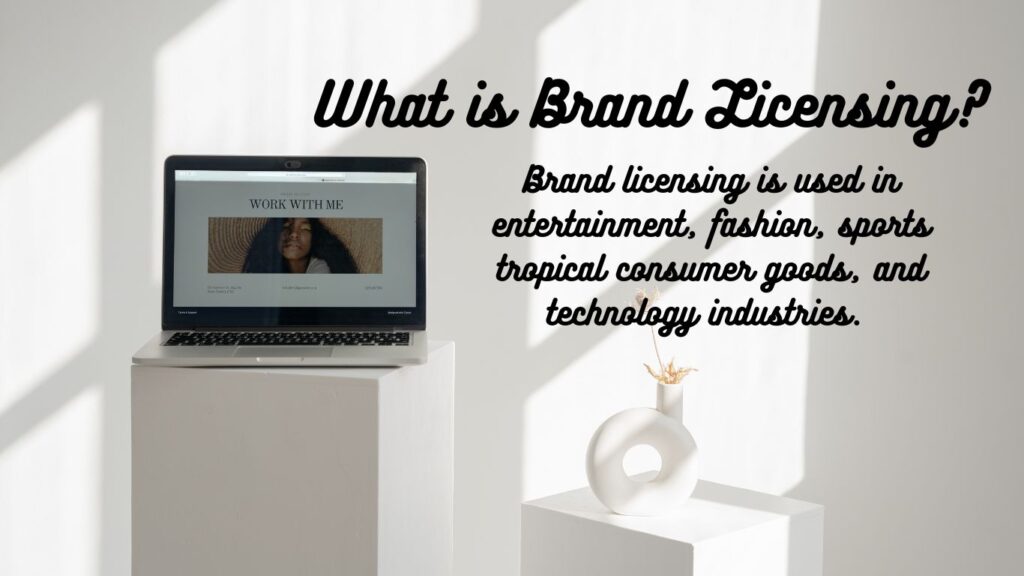Table of Contents
Introduction
Licensing is a very effective and efficient strategy that can be employed to disseminate a brand beyond its current markets and generate additional revenues in controlled risk circumstances. Rights of the personality, while permitting other companies to utilize their brand name, logo, or other related properties, allow the owner of the brand to monetize the power of the brand in a plethora of ways. Brand licensing is the focus of this article and what it has to offer as well as the challenges that are likely to be encountered and how the whole process can be made successful.
What is Brand Licensing?
Brand licensing therefore can be defined as the management practice in which the owner of a brand known as the licensor allows the other party known as a licensee, the rights to utilize trademarks, logos, figures, or products among others in exchange for royalty or can pay for such rights. Licensing gives the licensee permission to manufacture, advertise, and distribute products bearing the licensor’s trademark and thus enjoy from the customer base.
Brand licensing is used in entertainment, fashion, sports tropical consumer goods, and technology industries. Brand licensing allows business firms to expand their production portfolio and market share as well as establish brands and channels without incurring direct costs in research and distribution.

The Role of Brand Licensing
Brand licensing offers several key advantages:
1. Revenue Generation: Royalty or licensing fees are other sources of income that are easily obtained through licensing agreements. Such revenues tend to be expressed in terms of royalties, which depend on the licensee’s turnover and give the licensor a share in the success of the licensed products.
2. Market Expansion: Licensing also allows brands to expand in new regions or across different categories without a lot of capital required. For instance, a fashion firm may grant the use of its name to a perfume maker to market the brand in the beauty product industry.
3. Brand Awareness: In licensing a brand, firms are therefore able to enhance the visibility of the brand to market the brand to different markets and different areas of operation. This increased visibility makes the solidification of the brand as well as gaining new consumers.

4. Risk Mitigation: Licensing means that the owner of a brand may consider new opportunities in a new market when the rejection of those opportunities entails minimum financial risk. Product development, manufacturing, and marketing are mostly the responsibility of the licensee, and the licensor gains by having their brand spread to other fields.
Strategies to Achieve Higher Level of Brand Licensing
1. Choose the Right Licensee
Brand licensing agreement involves choosing the right licensee because this will be an influential factor in the success of the entire contract. The licensee should have established and generated a proven experience in the industry of operation of the licensed products as well as the ability to maintain the quality and integrity of the products. The licensee should be reputable and have access to the appropriate market that is in line with the licensor’s brands and goals.
Example: Disney is not seen to allow any Tom Dick and Harry for associating with its characters and franchises. That is why Disney collaborates only with trusted manufacturers and guarantees that the product licensed by the company will be popular among consumers.
2. Define Clear Licensing Terms
The structure of the licensing agreement, therefore, has to be workable to protect the licensor’s brand while at the same time exploiting the licensing relationship. License provisions should include the identity of the elements of the brand that are being licensed, the geographical area of licensure, the term of the license, and the fee. It should also indicate features such as quality control measures, marketing responsibilities, and conditions that make up termination.
Example: Nike’s licensing agreements with manufacturers of branded apparel and accessories contain rigorous quality standards that are followed by manufacturers so that all branded attires and other accessories made by licensed apparel manufacturers compliment Nike’s image and quality.

3. Maintain Quality Control
Policing is also important in license agreements with a view of ensuring that products bearing a particular brand do not compromise its value. The licensor should set quality standards, both on the product itself and the packaging and branding of the licensed product, and everything in between, and should then review the licensee’s adherence to those guidelines regularly.
Example: Coca-Cola company allows for Merchandise licenses where you can get items bearing the Coca-Cola brand and logo from t-shirts to key holders. To minimize such products, the company has particular standards for the design and manufacture of such products to conform to the company’s image and standards.
4. Leverage Co-Branding Opportunities
Co-branding where the licensor’s brand and the licensee’s brand are placed on a product helps to make licensed products more attractive and have a better market presence. This often-used strategy may be used by both the party to build on each other’s brands and create higher visibility.
Example: For several years, the Lego and Star Wars companies have enjoyed successful cooperation thanks to the sets that combine the Lego constructions and the Star Wars personalities and spaceships. This has enabled both brands to advertise to the business houses that form the followership of the other brand and thereby cover a broader market.

5. Monitor Market Performance
Therefore, tracking the market performance of the licensed products is going to be crucial in analyzing the success of the licensing agreement and guiding the party in the future on which other agreements to undertake. The licensor needs to monitor the amount of sales, customer response, and broader market trends to assess the efficiency of the use of licensing.
Example: The action figures and apparel with licenses from Marvel are carefully observed in terms of the consumers’ response to this particular merchandise to set necessary strategies for its licensing activities.
Challenges in Brand Licensing
While brand licensing offers numerous benefits, it also presents challenges: While brand licensing offers numerous benefits, it also presents challenges:
Brand Dilution: Inexperienced management of licensing might cause brand jeopardy, that is, the brand is eroded or diluted through over-branding or through its association with inferior products.
Quality Control Issues: The biggest challenge in compliance with quality standards is to ensure that all the licensees comply especially when the licensees are different in different markets.
Legal and Contractual Disputes: Many of the licensing agreements are quite intricate, and therefore issues may crop up in the implementation of the contractual provisions, payment of royalties, or ownership of the Intellectual property.
Conclusion
Brand licensing, as a strategic marketing technique, opens up new opportunities for increasing brand mileage, brand-building profits, and prospective markets without risk. If the licensees are properly chosen, much attention is paid to quality control, and co-branding is properly used, a brand can be effectively extended and can grow for a long time. Brand licensing is also quite problematic as it may fail to meet the brand’s objectives of protection and revenue, it can create difficulties in maintaining brand reputation, and can also cause brand dilution problems, which is why it is important to avoid or minimize them.
Frequently Asked Questions
1. What is brand licensing?
Brand licensing is a method of business where the owner of a brand (the licensor) allows another business (the licensee) to exploit the brand name, symbol, or other assets in return for some time agreed profit or royalty. This makes it possible for the licensee to manufacture, promote, and even vend items under the licensor’s trademark.
2. What are the advantages of brand licensing for the licensor?
On the side of the licensor, brand licensing can be used as a source of extra revenue through royalties or fees for licensing. Of equal importance, it also assists in creating brand awareness in new territories or new products without the need for the licensor to invest heavily in making the product.
3. What are the benefits of the licensee’s access to a Brand Licensing Agreement?
Brand licensing is advantageous for the licensee as they can obtain a license to a known brand and thereby use the brand to approach potential customers, increase the products’ believability, and possibly sell more products. Thirdly, the licensee can also gain from tapping on the licensor‘s existing brand image that the firm has already built up in a certain market to penetrate other new markets.
4. How can licensors guarantee quality control of brands licensed to licensees?
Licensors can control quality by spelling down policies that cover aspects of quality, branding, and packaging in the licensing contract. They also may have a right to perform periodical inspections, demand samples of products to approve, and supervise the fulfillment of the licensee with the stated norms.
5. Can brand licensing play a role in a brand internationally?
Indeed it is as it helps one introduce the brand to the new overseas markets and it is relatively cheaper. Local licensees know the respective market and therefore, they can help a brand penetrate a new market without much capital investment and risks involved.
Have additional inquiries?
We are here to help. Let’s engage in a conversation.
